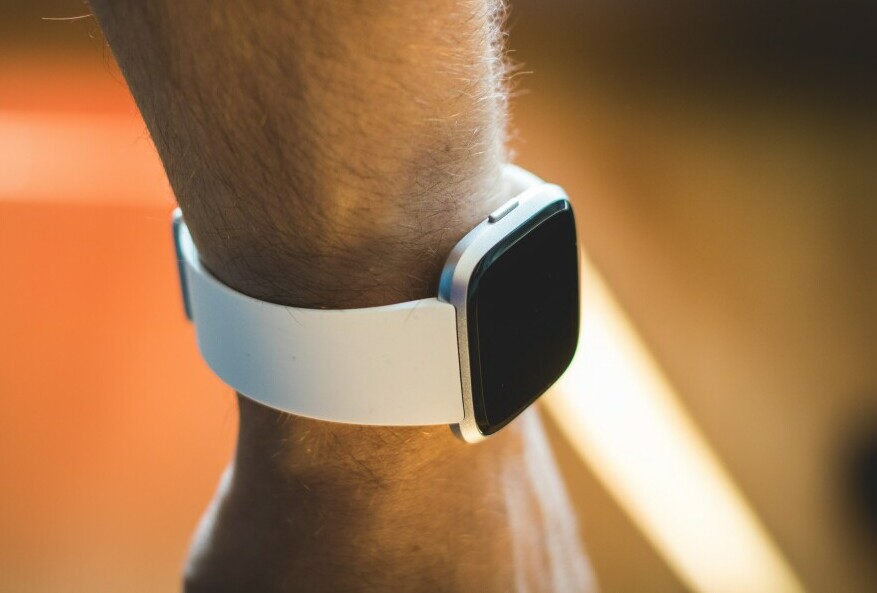If you’ve read any of my other posts that discuss dieting and losing weight, you’ll know that sticking to a caloric deficit is required in order for your body to burn fat. It’s the underlying principle behind every approach to dieting, and the easiest way to achieve this is by limiting your calorie intake.
It sounds pretty straightforward: eat fewer calories than what you burn in a day. Of course, if it was really that simple, it wouldn’t be something that so many people struggle with. It’s one thing to know what to do, but it’s a lot harder to actually do it.
Luckily, there are ways to make sticking to a caloric deficit easier and more enjoyable. Below are five tips and suggestions that can help you maintain the necessary caloric deficit to reach your weight loss goals.
1. Track Your Calories Burned
This should go without saying, but if you’re trying to diet, make sure you’re actually in a caloric deficit. Don’t think that you’re in a deficit just because you’re eating less than usual, because if you’re not, it’ll be a waste of time.
This means you need to actually track how many calories you’re eating, as well as know how many calories you burn in a day. Calculating your calorie output can be hard, but there are ways to at least get an estimate.

Your basal metabolic rate (BMR), which is the number of calories your body burns in order to maintain itself and survive, is largely determined by factors like your gender, age, weight, and height. You can use an online BMR calculator to first get a sense of the minimum number of calories you burn in a day.
However, how many calories you really burn depends on how active you are throughout the day. Therefore, I recommend getting a smartwatch or fitness tracker to better track your actual energy expenditure. Although these still aren’t completely accurate, they can give you a good enough estimate around which you can plan your diet.
There are plenty of fancy, high-tech smartwatches on the market, but if you’re like me and just want something to track your calories and basic health metrics, you don’t have to go for the newest, most expensive options. If you’re looking for something cheap, basic, and reliable, check out my review of the Fitbit Versa 2 smartwatch.
2. Learn to Like Being Hungry
If you’ve correctly planned out your diet so that you’re eating at a deficit, you’ll likely get hungry pretty frequently. Hunger is one of the biggest obstacles to maintaining a caloric deficit. It’s in our nature to eat whenever we get hungry, and that’s probably what you’ve been doing up to this point in your life. Therefore, resisting the urge to eat when hunger strikes can be incredibly challenging, and it’s something not a lot of people can do.
To overcome this, you need to change your perception of hunger. Instead of always fighting hunger, you must learn to like it. Being hungry is good because it means you’re running low on food and your body will need to start burning fat to obtain more energy. Train yourself to think of hunger not as a sign that you need more food, but as a sign that you’re losing fat. Doing so will make it much easier to stay within your daily calorie limit.
3. Choose Your Calories Wisely
Limiting your calorie intake should be your top priority if you want to lose weight. Where those calories come from, however, can still have very different effects on your body.
Eating lots of processed foods, as well as refined carbohydrates like white bread, white rice, cereal, and pasta, won’t keep you full for very long, since these types of foods are low in nutritional value and are digested very quickly. As a result, you’ll experience hunger more frequently and be more likely to overeat.
On the other hand, foods that are rich in protein, healthy fats, and fiber will keep you satisfied for longer. Even though you’re still eating at a deficit, you’ll be less inclined to snack between meals or develop late-night cravings.
4. Take a Simple Approach to Dieting

I’m sure you’re familiar with different weight loss methods and diets. In reality, though, implementing too many rules and restrictions around what you can eat, when you can eat, etc., only make things more confusing than they need to be. Trying to stick to these rules may also distract you from what’s really important, which again, is maintaining a caloric deficit. Lastly, it’s not always practical to follow these rules, such as when you’re on vacation or out with friends.
Therefore, it’s best to just keep things simple. The less intrusive your dieting habits are on your daily life, the more likely you’ll be able to stick to them in the long run. The limits put in place by different dieting techniques are only meant to help you achieve a deficit, but if you’re able to do that on your own, you can be quite flexible with your approach.
This is the overall sentiment I hold, for example, when it comes to the popular dieting method of intermittent fasting. If that’s something you’re considering implementing in your life, you may want to check out a post I wrote in which I give my thoughts on whether intermittent fasting is a good idea.
5. Give In to Your Cravings
Building off of my last point, it’s not necessary to adhere to diets that completely restrict you from eating certain types of foods. If you can’t eat the foods you like, or satisfy the cravings that arise every so often, your diet will be torturous and incredibly hard to maintain.
Just because you want to improve your health and be more fit doesn’t mean you can’t enjoy life. Allow yourself to indulge in your cravings, albeit in moderation and within your calorie limit. If it’s been a while since you had pizza and that’s all you can think about, carve out those calories from other meals during the day so you can enjoy a slice or two for dinner guilt-free. Another option is to have an entire cheat day once every few weeks to give yourself a break from dieting. Having a day to eat what you want might in fact help you better focus on eating healthy and eating at a deficit afterwards.
Food cravings are inevitable. Since we can’t prevent them, it’s better to give in to them in a controlled manner than let them build up and manifest in the form of you going on a binge and ruining all the progress you’ve made.
Work Smarter, not Harder
Many people tend to overthink the process of losing weight and make it way more complex than it needs to be. However, by understanding that being in a caloric deficit is what fundamentally causes weight loss, this process becomes a lot less mystifying and a lot more manageable.
Still, maintaining a caloric deficit is by no means easy. It’s something that’ll require many months of unwavering willpower and commitment, but by keeping the tips I’ve shared in mind, you’ll be much more likely to see it through to the end and use it to effectively reach your weight loss goals.
That being said, it’s also possible to take things too far when you’re trying to cut, which also isn’t good and can actually be quite dangerous. To better understand what weight-loss measures are considered unsafe and too drastic, I’ve written another post on some common mistakes to avoid when going on a cut.

